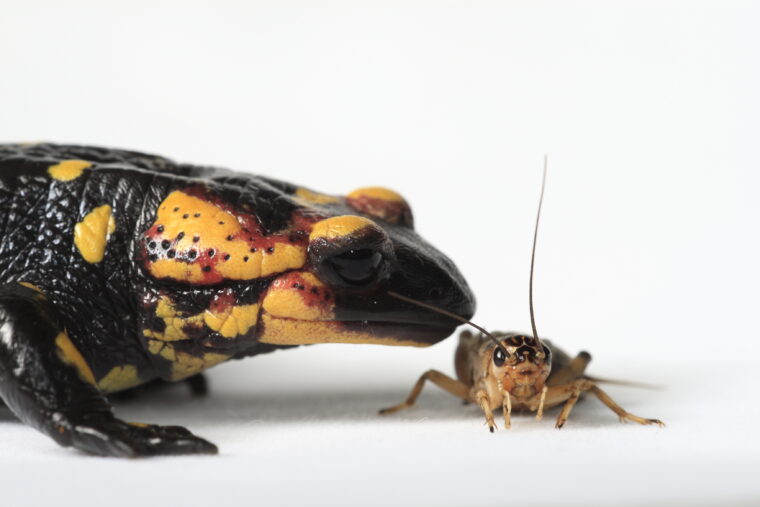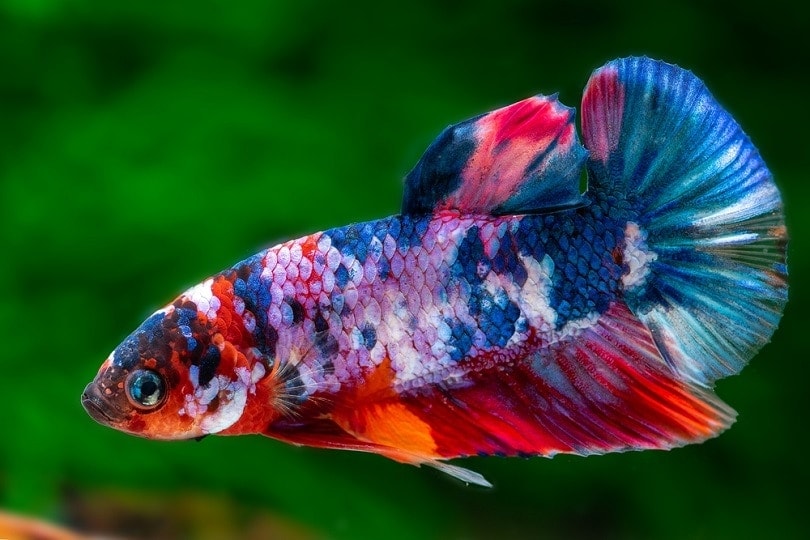
If you live in any type of environment that has bodies of water or small streams, you’ve probably run into a salamander or two in the wild. These cute little amphibians love moist areas, inhabiting temperate areas across five continents—but they’re the most popular in North America.
If you are thinking about getting a salamander as a pet, or you’re just curious about these little compact cuties, you may want to know about their diet. So, what do salamanders eat in the wild? What about in captivity? Let’s hash out their very favorite foods of all.
All About Salamanders
Salamanders are versatile little amphibians with unique adaptations and colors. They can be as small as 0.6 inches to as big as 3.8 feet! The smallest of these adorable little amphibians are pygmy salamanders—the biggest are giant Chinese salamanders.
All salamanders are aquatic or semi-aquatic, with soft, slick bodies that move well in the water. As younglings, they are strictly aquatic. Once they begin to mature, their gills will disappear and they will be equally between land and water.

Wild Salamander Diet
There are over 655 recognized salamander species. They come in so many eye-catching colors, sizes, and patterns! Salamanders are carnivores and voracious eaters. They will chow down on anything that moves, but they have their preferences.
It takes a salamander between 2–3 years to mature. They eat different organisms at every stage. When salamanders are young, they eat aquatic insects since they dwell in the water. As they age, their tastes shift more toward land insects, but they definitely aren’t too picky about what they consume.
But realistically, many salamanders act on movement, so their diets can be pretty diverse. They love insects and larva of all kinds. Sometimes, they even snack on other salamanders—yikes!

How Much Do Wild Salamanders Eat?
Salamanders are opportunistic eaters, so when they see a chance to act, they will. They don’t get to pick and choose just when they will get a meal, so they have to strike while the iron is hot. Sometimes, their diets will be rich, other times they will lack. It can depend on a variety of environmental factors.
So, to put it plainly, salamanders eat as much as they can, whenever they can.
Pet Salamander Diet
In captivity, things are a little different, but the contents are basically the same. You can feed your salamander on a set schedule and offer them a full diet with all the necessary nutrients.
Even in captivity, a salamander in their juvenile stage will feast on tubifex worms, daphnias, and brine shrimp. You can buy live food at local pet stores or bait shops.
Once they lose their gills in adulthood, their diets change a little bit.
Salamanders prefer slow-moving insects since they are easy to catch. Food will also depend on the types of salamander you own since they can be terrestrial or aquatic. Always make sure to check the specific dietary needs of your particular salamander species.

How to Feed Your Salamander
There are certain nutrients your salamander can’t get from a domesticated diet. So, in addition to live food, you’ll also need calcium powder or vitamins for optimal nutrition. You don’t have to coat the insect in calcium every feeding—every other feeding is ideal.
Since salamanders are nocturnal, they will likely feed better at night. So, you can offer dinner before you head to bed.
Feeding Schedule for Your Salamander
Feeding frequency depends very much on your salamander. You can offer your salamander food every day, and if they will eat, fantastic. Some of them don’t want to eat every day, and that’s okay. When your salamander shows interest, feed them as much as they will eat in one sitting.
Remove any scraps or extras from the cage when they’re finished. That helps to keep their cage area clean.
Summary
A salamander’s diet may vary slightly in the wild or as pets, but it stays relatively the same. In the wild, they may have more variety, but the frequency is another story. It’s hard to say sometimes when they will get their next meal.
In a terrarium, you have full control over their portions, but they might not get such a wide selection. Either way, adult salamanders love tasty, gut-filled insects and small organisms. Remember to feed your salamander a specific diet based on the type you have.
See Also:
Featured Image Credit: Rui Manuel Teles Gomes, Shutterstock








